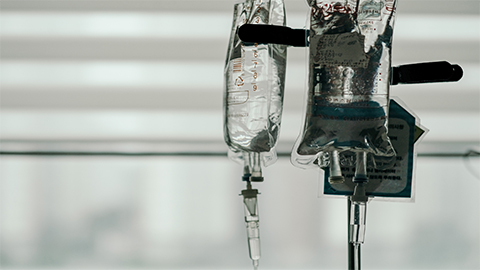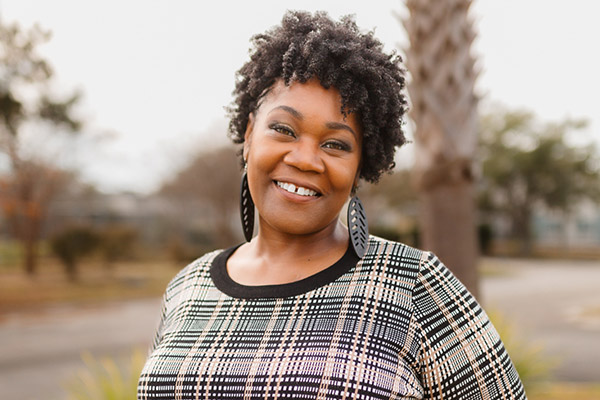10/06/2023

Here is a situation where healthcare for illness and self-care for wellness intersected in an unexpected way for me. I started with one point of view, and came around to another one—or at least a new curiosity – by the time I was finished. Where will you land on the issue of IV infusions?
Resources:
Pocket Pathology: https://www.abmp.com/abmp-pocket-pathology-app
IHACW Episode 288, Iron Infusions: https://ruthwerner.com/ep-288-iron-infusions/
IHACW Episode 317: Hemochromatosis: https://ruthwerner.com/ep-317-hemochromatosis/
Chelation for Coronary Heart Disease: What You Need To Know (no date) NCCIH. Available at: https://www.nccih.nih.gov/health/chelation-for-coronary-heart-disease-what-you-need-to-know (Accessed: 4 October 2023).
Chelation therapy: Can it treat heart disease? (no date) Mayo Clinic. Available at: https://www.mayoclinic.org/diseases-conditions/heart-disease/expert-answers/chelation-therapy/faq-20157449 (Accessed: 4 October 2023).
Chelation Therapy: EDTA and Other Chemicals, Benefits, Side Effects (2018) Healthline. Available at: https://www.healthline.com/health/chelation-therapy (Accessed: 4 October 2023).
Chelation Therapy: Purpose, Procedure, and Side-Effects (no date). Available at: https://www.webmd.com/balance/what-is-chelation-therapy (Accessed: 3 October 2023).
Food with EDTA, What Is EDTA in Food - Foods that Contain EDTA (no date). Available at: https://www.irochelating.com/news/foods-that-contain-edta.html (Accessed: 4 October 2023).
IV therapy: Uses, benefits, risks, and more (2022). Available at: https://www.medicalnewstoday.com/articles/iv-therapy (Accessed: 3 October 2023).
Kingson, J.A. (2021) Massage, facial, pedicure... intravenous drip?, Axios. Available at: https://www.axios.com/2021/12/01/intravenous-drip-therapy-nutrition-vitamin (Accessed: 4 October 2023).


0:00:01.4 Ruth Werner: Hello, "I Have a Client Who... " listeners, Ruth Werner here, and I'm so excited to let you know that my library of online self-paced continuing education courses has just expanded. I now have a two-hour ethics course called A Doctor's Note is Not Good Enough..., and what is better? This NCBTMB approved course goes into why a doctor's permission or approval or even a prescription doesn't provide the legal or safety protection you might think it does, then we look at how to start useful conversations with healthcare providers that will actually get us to safe and effective massage for our clients with complex conditions. Visit my website @ruthwerner.com for more information and to register for A Doctor's Note is Not Good Enough... And what is better?
[music]
0:01:00.1 RW: Hi, and welcome to I Have A Client Who: Pathology conversations with Ruth Werner, the podcast where I will discuss your real life stories about clients with conditions that are perplexing or confusing. I'm Ruth Werner, author of a Massage Therapist's Guide to pathology, and I have spent decades studying, writing about and teaching about where massage therapy intersects with diseases and conditions that might limit our client's health. We almost always have something good to offer even with our most challenged clients, but we need to figure out a way to do that safely, effectively and within our scope of practise. And sometimes, as we have all learned, that is harder than it looks.
0:01:47.2 RW: Today's story comes from a massage therapist who asks a very interesting question, they say, "I am the only massage therapist at a medical spa, which includes weight loss and family medicine. We are trying to grow the med spa portion of our business in doing so, we thought it would be a great benefit to our guests to combine the IV therapy that we already offer and massage. However we worry about the circulatory system and etcetera, by administering both at the same time. Do you have any ideas on how to combine me safely? Or do we reduce the massage choice during the session, maybe only reflexology while receiving IV therapy. And then our contributor included some information about the kinds of IV therapy that are offered at this spa, which according to the website involves infusing fluids with vitamins and minerals and electrolytes and other nutrients directly into the blood stream. I looked at the menus and I found drips for immune system support and to nourish the skin and hair, there was one for mental focus or to recover from a hangover or overwork, and another to undo some of the effects of aging, and there was one on offer for chelation, and I'll come back to that in a minute.
0:03:07.0 RW: I had completely forgotten about this, but it turns out that in 2022, I did a podcast on an adjacent topic, "Iron infusions for a person with severe anemia." That was episode 288, and of course, I'll put a link in our show notes. So I went to Medical news today, and according to them, IV therapies are the most common intrusive procedures in healthcare, and that makes sense when you think about it to be intrusive means something is breaking the skin. IV therapy is less invasive or risky than surgery, but with immediate access to the bloodstream, instead of the complicated routes in the digestive system that usually allow only a small fraction of an orally taken drug or a nutrient into the bloodstream, and that happens after an extended period of time.
0:04:00.3 RW: Well, by comparison, IV therapy looks like a pretty safe, convenient and efficient way to balance out some problems with our internal chemistry or to overcome some issues with digestive function. Plus unlike some other external medical applications like skin patches or inhalants with IV therapy it's possible to control exactly how much of the substance is taken in. And this is a good moment to tell you that at this facility in particular, there are two medical doctors and a Doctor of Nursing Practice and some nurse practitioners and other highly trained people on the staff, and of course, their massage therapist, who is our contributor. This is not true of all IV infusion sites, these are sometimes offered in malls or airport with no assurance that anyone with advanced medical training is around in case of problems or to do client evaluations.
0:04:57.1 RW: But because in this instance, they're being offered in a medical spa, I'm gonna go forward under the assumption that these treatments are administered after some kind of evaluation to be sure that they are a good idea for the people who want them. Okay, my friends, now I have to make clear that as I read more about IV drips, I developed some negative feelings, and I try to be upfront and clear about my biases, so I will name them now. I am not in favor of supplementing nutrients via IV, if they can be provided through a healthy, varied balanced diet. And that I hope is not a controversial thing to say, and of course, there are circumstances when dietary adjustments just can't do the whole job, so it's great that is an alternative, but IV infusions, to me at least, are not an adequate substitute for eating in a healthy way. I'm also resistant to the idea of IV therapy as something like a special treat or as part of a beauty regimen or to boost your energy. That might not be everyone's point of view, after all, how different is this really from getting a B12 shot or from taking large doses of vitamins. In fact, you could make an argument that IV drips are safer since this is all done under supervision and I hope customized to the individual, unlike those giant handfuls of vitamin D or whatever that I often see people swallow.
0:06:36.8 RW: Another one of my friction points here is the claim that these treatments can detoxify anything. Outside of Chelation, which I'll get to in a moment. This is the claim that just makes my teeth itch, but I really don't wanna go down that rabbit hole right now. So I have to confess some of these drips, they sound a little fat-ish to me, are they really offering anything more than instant hydration or maybe where I'm getting stuck is in the crossover between medical treatments and spa treatments. We know that in our profession, what we might call Strictly relaxation or recreational massage always carries therapeutic benefit just because welcomed touch is good for you. And the line there between what a person does for health and what they do for a pleasure, it's blurry where our work is concerned. So are these IV infusions, are they for health or for recreation.
0:07:42.0 RW: Well, one doesn't have to preclude the other, but for me at least, this is a new way of thinking about where healthcare for illness and self-care, for wellness might intersect. And I'm gonna leave all this now because I wanna talk about chelation. In it's conventional use, chelation is definitely healthcare and not for recreational purposes. Chelation is a process by which a fluid is infused into the body with the purpose of removing toxic heavy metals like lead or arsenic or mercury. It is an FDA-approved treatment for heavy metal poisoning. It often uses a chemical called Disodium EDTA, and because this involves chemistry, I had to look this up to try to wrap my head around it a little bit. Disodium EDTA, which stands for ethylenediaminetetraacetic acid does that help you? It didn't really help me. But this is an agent that sequesters a variety of Polyvalence cations such as calcium. And I get this from PubChem, which is part of the National Library of Medicine. It comes in different forms, and one of them is used as a food preservative, and so we're probably taking some of that stuff in every day.
0:09:07.6 RW: There are some alternatives to EDTA for chelation as well, including Dimercaptosuccinic acid and Dimercaprol. Different agents might be used to target different toxic materials. The simplified version of what happens in Chelation is that the IV introduces one of these chelating agents into the blood stream, and this chemical then clings to molecules of toxic metals. It extracts them from wherever they've been hiding, and then those packages of chelating agent and heavy metals are excreted in the urine. So this is actually a detoxification process. How did a person accumulate those toxic metals to begin with?
0:09:52.2 RW: Well, water pollution, air pollution, exposure to lead paint and a variety of diseases can lead to a build-up of some dangerous metals. Wilson's disease causes copper poisoning. Hemochromatosis causes a build-up of excessive iron that can cause big problems, and there is in fact, another "I Have A Client Who podcast" On that condition, and people who are on dialysis, which is the topic of another recent, I Have A Client Who, episode, may find that that process causes a build-up of aluminum, which can be dangerous, and all of these can be mitigated by chelation therapy. However, there are some claims about chelation that I think deserves some more skeptical attention. Because calcium is a factor in atherosclerosis, remember those plaque deposits get calcified, there is an interest in chelation to undo that process, and that is meant to reduce the risk of heart attack.
0:10:50.2 RW: Well, this has been studied, and the data shows that people who undergo chelation for atherosclerosis have a reduced risk of a cardiac event if they also have diabetes, but people without diabetes but with heart disease have little if any benefit from chelation. More research is ongoing, but at this point, the benefits of chelation for heart disease do not appear to outweigh the risks, and this is not a treatment that is covered by health insurance, and this all comes from the National Center for complementary and Integrative Health. Chelation is sometimes discussed as a way to reduce the risk of Alzheimer's disease, because one theory of Alzheimer's is that it is linked to aluminum deposits in the brain. But the chelating agents cannot pass through the blood-brain barrier, and to date, no research has shown any improvement with this strategy.
0:11:46.4 RW: And of course, there's this myth that mercury and childhood vaccines causes autism and chelation therapy has been used to try to fix autism by extracting this mercury, and that's a whole scam that I will not go into here, and this med spa makes no such claims, which I was glad to see. Alright, so that's a quick look at IV infusions and chelation for their benefits, but to make any decisions about massage, of course, we need to look at possible side effects too, and there are a few, mostly because these are intrusive behaviors that involve breaking the skin. So the risks related to IV therapies in general, include damage to local blood vessels, swelling, bruising, maybe the formation of a blood clot or a local infection in an abscess, and other problems that well-educated providers will know how to avoid. But these are good reasons to make sure to seek IV therapy from reputable providers.
0:12:48.7 RW: Chelation therapy can have more serious side effects and complications because the person receiving it is more likely to be medically complicated. Patients may report headache, nausea, vomiting, or it can be too effective removing too much of some key minerals, and that leads to deficiency in calcium or some other things, so in this context, a patient undergoing chelation really needs to be carefully monitored. But now it's time to return to our contributors question. Would it be appropriate to add massage therapy to an IV infusion session? Well, I need to start with some assumptions, and I'm gonna start with this one, that the clients here are in general good health and not struggling with heavy metal poisoning, if a person undergoing chelation therapy is seeking massage, those decisions may be more complex because they are more likely to be ill.
0:13:43.4 RW: And so for now, I'd like to leave them out of this discussion. But for other people who are seeking IV drips to improve various aspects of function, mental sharpness or immune system strength or to help with general nutrient waste to turn over, their IVs are gonna be inserted in the anterior arm, as a general rule, and the session last for 30 to 40 minutes, and at this facility, medical professionals are on site. So putting this through our critical thinking machine, where do we land about massage therapy for someone in one of these sessions? What are the possible risks? What are the benefits? Is there a way to minimize the risks and maximize the benefits?
0:14:29.1 RW: The first thing we need to address is whatever underlying conditions these folks may live with, they might have fibro or chronic fatigue or diabetes or an auto-immune disease or some combination of things, and of course, all of that background information has to figure into our plans. But the risks related specifically to the infusion really mainly have to do with disrupting the IV line for sure, and altering the speed of uptake, maybe. If we actually unpack that a little bit, here's where I land. The fluid is introduced to a vein in the arm, that vein carries it up to the heart, it makes a short detour through the pulmonary circuit, and within a minute that fluid with all that stuff in it is pumped into the arterial circuit and on it's way through the rest of the body in the arteries.
0:15:23.4 RW: And at that point, there's really nothing that massage is likely to do that might impact where or how fast this fluid travels. So to avoid doing anything weird to uptake, I would suggest simply not massaging the arm that has the IV line, but it's hard for me to see any risks with massage to the rest of the body, given that the person is probably in some kind of reclining chair, there may be limited access to their back or their shoulders, but you know what, they're neck, the scalp, their feet, all of these are probably readily available. What benefits might we offer? All of the typical ones related to massage, as far as I can see, it would be good to know why this person is receiving IV treatment if it's for chronic headaches or fatigue.
0:16:13.6 RW: We might be able to help too. If it's for mental acuity and they need to be on their A game after their session, maybe we can accommodate for that with enlivening strokes or some tapotement to finish their session. What other accommodations might you see for someone seeking immune support or to reduce the effects of the aging or any other reason that they are receiving IV therapy? So to me, all of this leads to a really big question, which is, do these things really work? I don't know. I'd say that they work. If the person who's receiving them says they work. Is there a risk of harm? Well, besides spending money on something that might not be as effective as people think, I don't really see any significant risk of harm given that this is done in a professional clinic with medical doctors on-site. So let's say that a person reports that they feel like a million bucks after their infusion, who am I to disagree. I encourage them that this massage therapist, with the support of the rest of their staff, move forward and go ahead and offer their work to these patients with all appropriate cautions about underlying conditions and disrupting the injection site and leaving the infusion arm alone.
0:17:33.6 RW: I'm always inclined to start conservatively and then proceed depending on how the client responds, but my inclination is to say that this could be a really nice thing to add to this treatment. In fact, I have to say that since starting my work on this episode, I have maybe slung my attitude around a little bit. Okay, maybe a lot in a safe qualified facility with medical professionals doing the procedure, I have to say, I'm pretty curious to see how it feels to have one of these infusions and a delicious head and foot massage at the same time sounds great to me. In fact, now I kind of wish I lived in a city where this is happening, because if I did, I'd go say, sign me up.
0:18:22.2 RW: Hey everybody, thanks for listening to, "I Have A Client Who" Pathology conversations with Ruth Werner. Remember, you can send me your, "I Have A Client Who stories" to, ihaveaclientwho@abmp.com that's I Have A Client Who, all one word, all lowercase @abmp.com. I can't wait to see what you send me and I'll see you next time.





